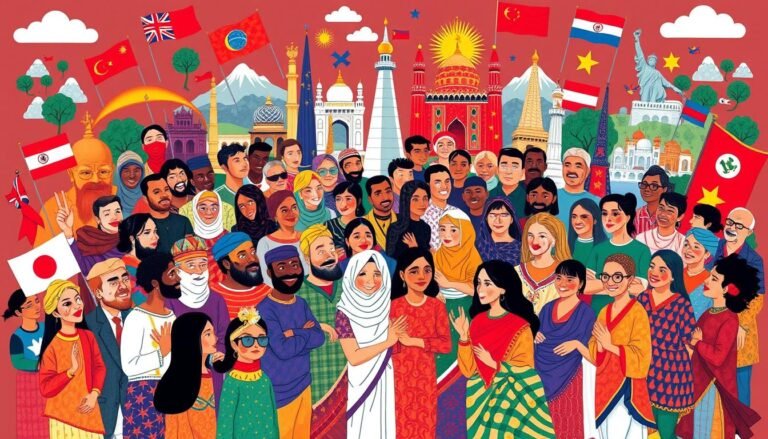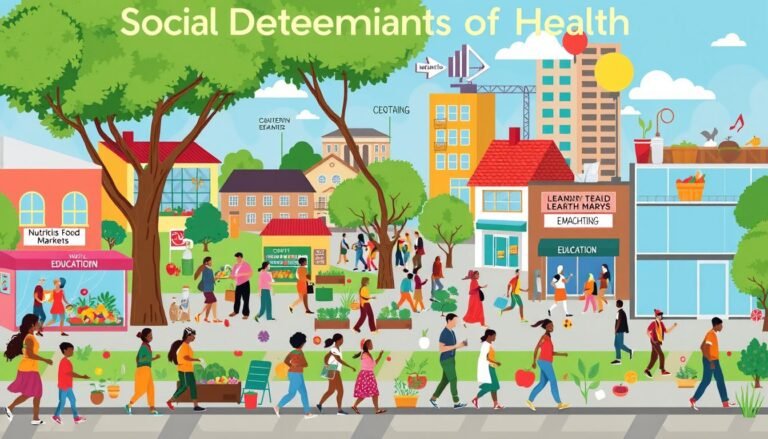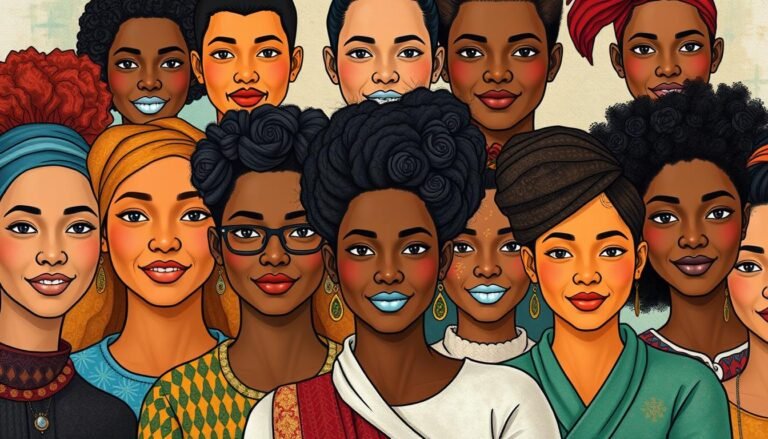Gender Roles in Society: A Sociological Analysis
Ever wondered why pink was once seen as a boy’s color? This fact shows us how our views on gender have changed. It makes us think about the complex world of gender roles in our society. By looking at sociology, we can see how gender expectations have changed and affect our lives.
Gender roles aren’t set in stone. They come from how we interact with each other and our environment. In 1972, sociologist Ann Oakley pointed out the difference between sex and gender. She said gender is about how we value being masculine or feminine. This shows how society plays a big part in gender inequality.
Looking into this topic, we’ll see how gender norms have changed over time and in different places. For example, in some Native American and African tribes, women were leaders. This is very different from what we see in many Asian and European societies. This shows we need to look at gender roles from many angles.
We’ll look at different parts of gender in society, from history to today’s issues. We’ll see how family, school, and media shape gender roles. We’ll also look at how these roles affect who we are and how we work with others. By understanding these things, we can work towards a society that treats everyone fairly.
Key Takeaways
- Gender roles are socially constructed and distinct from biological sex
- Historical perspectives reveal changing gender norms over time
- Sociological analysis helps understand gender inequality in society
- Gender socialization occurs through various social institutions
- Cross-cultural perspectives highlight diverse gender role expectations
- Feminist movements have challenged traditional gender roles
- Understanding gender roles is crucial for addressing social inequalities
Understanding Sex and Gender: Key Concepts
Sex and gender are complex topics that shape our identities and how we interact with others. Let’s dive into these concepts to understand their roles in society better.
Defining sex versus gender
Sex is about biological traits that put people into male or female groups. These groups are based on chromosomes, hormones, and physical traits. Gender is more fluid. It includes social norms, attitudes, and behaviors linked to being male or female.
The social construction of gender
Gender is shaped by society. Cultural expectations and norms shape how we see masculinity and femininity. This affects individual identities and social actions. For instance, women often talk about personal matters with friends, while men stick to less intimate topics.
Gender as a spectrum
Gender isn’t just about being male or female. It exists on a spectrum. This idea recognizes diverse gender identities beyond traditional categories. The Kinsey scale shows that sexuality, like gender, isn’t fixed but varies along a continuum.
| Aspect | Male-Associated | Female-Associated |
|---|---|---|
| Emotional Expression | Less likely to cry | More likely to cry |
| Caregiving | Less involved in childcare | More involved in childcare |
| Non-verbal Communication | Smiles less frequently | Smiles more frequently |
| Aggression | More physically violent | Less physically violent |
Understanding these key concepts helps us navigate the complexities of sex, gender identity, and the gender spectrum in our diverse society.
Historical Perspectives on Gender Roles
Gender roles have changed a lot over time. In the past, men and women had strict roles. They often worked together on farms before the industrial era. The 1800s brought new ideas about gender, thanks to science and Victorian values.
Studies show that old gender norms still affect us today. A study found that places that used plows for farming have fewer women working outside the home. This shows how deeply gender roles are ingrained.
Gender roles are still evolving. In 2023, 18% of stay-at-home parents were dads, up from 11% in the late 1980s. Women now make up 28% of senior managers, showing changes in the workplace. These changes question the idea that men are the only breadwinners.
“Gender roles are not set in stone. They change as societies evolve and people challenge old norms.”
Some cultures have always viewed gender differently. The Bugis people in Indonesia recognize five genders. In Hawaii, a third gender called māhū was important. These examples show gender isn’t just about men and women.
Today, we’re still working to break down old gender norms. More men are teaching and caring for kids. Women are entering fields like science and tech. As society changes, so do our views on gender roles.
Gender Roles and Society: A Sociological Analysis
Sociological theories give us deep insights into gender roles and social structures. They help us grasp the complex dynamics of gender inequality in society.
Functionalist Perspective on Gender Roles
The functionalist view believes gender roles are key to keeping society stable. It says that women should care for the family and men should earn money. But, this view often misses the power imbalance.
Conflict Theory and Gender Inequality
Conflict theory looks at the power gaps in gender roles. It points out that men usually control more economic power in families. This theory explains why there are still workplace inequalities, with certain tasks given to each gender.
Symbolic Interactionism and Gender Performance
Symbolic interactionism studies how we act out gender roles. It shows how we learn and perform gender norms through everyday interactions. This theory helps us see why some lesbian couples might share household chores more fairly.
Research shows gender is linked with other factors like race, class, and sexual orientation. For example, working-class women and women of color often had to work more due to economic needs. These factors lead to varied family experiences and question traditional gender roles.
“Alternative perspectives on gender roles are gaining support in the 21st century, offering new ways to understand and challenge social structures.”
As society changes, so do our views on gender roles. Sociological analysis keeps giving us key insights. It helps us tackle gender inequality and build more fair social structures.
The Impact of Gender Roles on Individual Identity
From the moment we are born, gender roles shape our lives. They affect how we grow and what others expect from us. These roles can push us to fit in, even if it’s not who we really are. This struggle affects how we see ourselves and can stop us from reaching our full potential.
- Over 575 million girls live in countries where gender norms violate their rights.
- Girls perform two-thirds of household chores for 21+ hours weekly, affecting their education.
- Women spend 2-10 times more time on unpaid care work than men.
These gender roles start early. By age two or three, kids start to understand them. By four or five, they act accordingly. Parents often help shape these roles, with dads setting clear expectations for gender behavior.
Gender also affects what jobs people choose. Men are more likely to work in law enforcement, the military, and politics. Women are more often found in childcare and healthcare. This shows how deep these societal expectations go.
“Gender roles significantly influence individual identity formation, creating pressure to conform to societal expectations that may conflict with personal inclinations.”
It’s hard to break free from these gender norms, but it’s important for true growth. Understanding how gender roles shape us is key to building a society that values everyone’s unique identity.
Gender Socialization: How Society Shapes Gender Norms
Gender socialization shapes our view of gender roles from a young age. It’s a complex process with many societal influences. These shape gender norms and expectations.
Family Influence on Gender Roles
The family is key in gender socialization. Parents often play a part in reinforcing traditional gender roles. They might push boys to be tough and girls to be caring. This can deeply affect how a child sees gender roles.
Educational Institutions and Gender Expectations
Schools also shape gender norms. The impact goes beyond what’s taught to include how students interact with teachers and peers. Studies show schools can either support or question traditional gender expectations. For example, a program in India has shown big changes in gender attitudes among young teens.
Media Representation and Gender Stereotypes
Media has a big role in gender socialization. TV, movies, and social media often show exaggerated gender roles. These can shape how we see gender. The media can either stick to traditional gender norms or offer new views, depending on what’s shown.
| Socialization Agent | Impact on Gender Norms | Example |
|---|---|---|
| Family | Reinforces traditional roles | Encouraging boys to be tough |
| Education | Can challenge or reinforce norms | Gender Equity Movement in Schools |
| Media | Shapes perceptions through stereotypes | Exaggerated gender roles in TV shows |
Knowing about these influences is key to fighting gender inequalities. By seeing how family, education, and media affect gender socialization, we can aim for a fairer society.
Gender Roles in the Workplace
The workplace is still a place where gender equality is fought for. Even with progress, discrimination based on gender is still there. Women globally earn about 20% less than men.
Women often work in jobs that are seen as low-status and pay less. This situation keeps women in certain roles and limits their career growth.
A study with 12 women looked into gender roles at work. It found important themes like how people communicate, leadership styles, and family duties. These things greatly affect women’s careers.
| Issue | Statistics | Impact |
|---|---|---|
| Leadership Roles | Women occupy 37% globally | Limited representation in decision-making positions |
| Gender Pay Gap | Approximately 20% | Economic inequality and financial instability |
| Occupational Segregation | Women concentrated in low-paid jobs | Reinforces stereotypes and limits career growth |
The study showed that how a company deals with bias and microaggressions matters a lot. To fix these problems, companies and experts in organizational development need to work on making workplaces more equal. They should also challenge old ideas about gender roles.
Challenging Traditional Gender Roles: Feminist Movements
Feminist movements have led the charge against traditional gender roles. They have grown over time, focusing on women’s rights and gender equality.
First-wave Feminism and Women’s Suffrage
First-wave feminism was all about women’s suffrage and legal rights. Women in the early 20th century fought hard for the right to vote. This movement set the stage for future gender equality efforts.
Second-wave Feminism and Reproductive Rights
Second-wave feminism tackled reproductive rights and workplace equality. Women demanded control over their bodies and equal chances in the workplace. Reproductive rights became a key issue during this time.
Intersectional Feminism and Contemporary Challenges
Now, intersectional feminism looks at how race, class, and gender intersect. It shows how these factors create discrimination. Gen Z has taken to this form of feminism, known for its progressive views.
| Wave of Feminism | Key Focus | Time Period |
|---|---|---|
| First-wave | Women’s suffrage, legal rights | Late 19th – early 20th century |
| Second-wave | Reproductive rights, workplace equality | 1960s – 1980s |
| Intersectional | Interconnected social categories, inclusive approach | 1980s – present |
Even with progress, there’s still work to do. The gender pay gap is still a thing, and women face hurdles in leadership. Men in female-dominated fields often face bias. Yet, grassroots efforts and global campaigns keep pushing for change. They aim to promote gender equality and shake off old norms.
Cross-Cultural Perspectives on Gender Roles
Cultural diversity shapes how we see gender roles in interesting ways. Anthropological studies show big differences in how societies view gender roles. For example, in Chile, 62% of people think women should mainly be mothers and wives.
In Sweden, they believe in gender equality. They have policies like shared parental leave. This means both parents get 16 months of paid time off.
Japan is another country where gender roles are changing. Women got the right to vote in 1946. By 1987, 68% of working women were married. Now, women make up about half the workforce.
This change shows how attitudes towards women in work are changing around the world.
A study looked at 30 cultures and found most agree on gender stereotypes. Men are seen as strong and active. Women are seen as caring. But, these views can change.
In some societies, being masculine means achieving personal goals. In others, it means helping the group succeed. These insights show how culture and gender norms are connected.
Source Links
- Gender Roles in Modern Society – One World Education
- A Sociology Perspective – Social Sciences Student Journal
- Sociology of Gender
- 4.1 Understanding Sex and Gender
- Understanding Sex and Gender
- 11.1 Understanding Sex and Gender
- Gender: An Historical Perspective
- Gender role | Definition, History, & Facts
- Gender role
- Gender Roles and Society
- Focus: Sex and Gender Health: Gender Roles: A Sociological Perspective
- How Harmful Gender Norms Create an Unequal World for Children
- Gender and Socialization | Introduction to Sociology
- Gender norms and social norms: differences, similarities and why they matter in prevention science
- Addressing Gender Socialization and Masculinity Norms Among Adolescent Boys: Policy and Programmatic Implications
- Understanding gender roles in the workplace: a qualitative research study
- Gender, social class, and women’s employment
- Addressing workplace gender inequality: Using the evidence to avoid common pitfalls
- Breaking Gender Stereotypes: Challenging Traditional Roles In Society | Rock & Art
- Feminism and Sexism
- Theory in a Digital Age: Feminism and the Destruction of Gender Roles
- The Cross-Cultural Perspective
- Stereotypes and Gender Roles
- Gender and Culture







